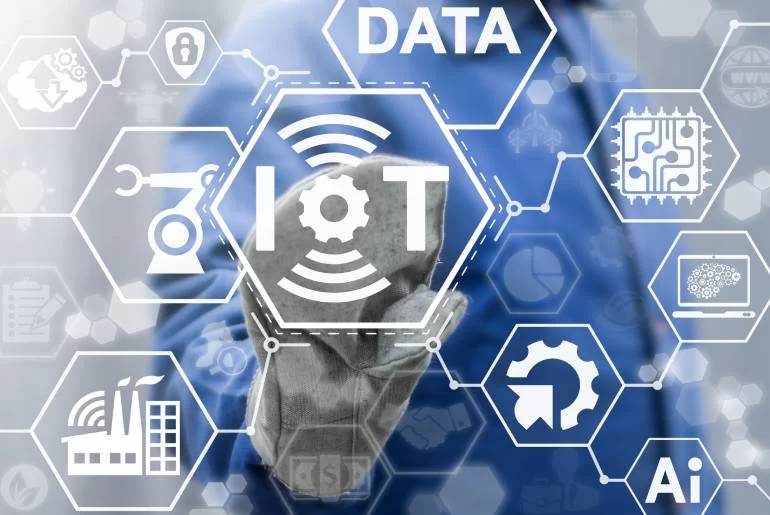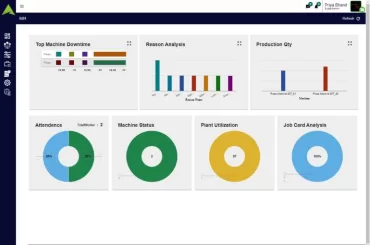The Internet of Things, also known as IoT, essentially links everyday objects, processes, and environments, to the internet.
Its uses are vast and diverse – it has revolutionized industries far and wide, from home automation to agriculture, from urban planning of smart cities to healthcare. Businesses worldwide also use IoT to digitalize industrial processes and make everyday objects smarter.
The technology also automates inventory management and gets rid of laborious manual tasks. It provides your business with many benefits, including optimizing daily tasks and planned maintenance, abolishing out-of-stock and overstock scenarios, and improving customer experiences.
What is Iot-based asset management?
IoT-based asset management is the use of IoT devices to track and manage assets in real-time. It involves the use of sensors and other devices to gather information on asset performance, location, and usage. This information is then analyzed to maximize asset utilization, minimize downtime, and avoid breakdowns.
The following elements are typically included in an IoT-based asset management solution:
Sensors and IoT gadgets: These are used to gather information on a variety of parameters, including temperature, humidity, light exposure, vibration, and location.
Data storage and analysis: To gain insights into asset performance and usage, data collected by IoT devices is centrally stored and analyzed using analytics tools.
Data storage and analysis: To gain insights into asset performance and usage, data collected by IoT devices is centrally stored and analyzed using analytics tools.
Asset tracking and monitoring: IoT devices enable businesses to optimize asset utilization and avert breakdowns by providing real-time tracking and monitoring of assets.
Supply chain management: It can give businesses visibility into the entire supply chain, from raw materials to finished goods.
Its primary advantages are:
- Enhanced operational efficiency
- Better control over the sales lifecycle and
- More efficient resource use
- More effective safety and compliance checks
- Automation of operations for maintenance and repair
- Simple Identification of Growth Opportunities
- A smarter, flexible ecosystem
Let us dive deep into how asset management achieves all this…
How IoT-based asset management can transform your business?
Asset management powered by IoT can help businesses operate more efficiently, reduce costs, and improve the customer experience, resulting in increased competitiveness and profitability.
Real-time tracking and monitoring: IoT devices have the ability to track and keep an eye on assets, giving precise information on their location, health, and performance. Utilizing this information will help you make the most of your assets, cut down on downtime, and avoid breakdowns.
Predictive maintenance: IoT devices can gather information on asset performance, usage, and wear and tear. This information can then be analyzed to determine when maintenance is necessary. This makes it possible for companies to plan maintenance in advance, cutting downtime and enhancing asset performance.
Improved supply chain management: IoT devices can give visibility into the entire supply chain, from raw materials to finished goods. This enables businesses to optimize inventory levels, cut waste, and speed up delivery.
Improved customer experience: IoT devices can be used to gather information on consumer behavior and preferences that can be used to customize goods and services to meet their requirements. Customer satisfaction and loyalty may increase as a result.
Cost Savings: It can help businesses save money by increasing asset utilization, lowering maintenance costs, maximizing inventory levels, and minimizing waste.
Data security and risk reduction: By ensuring that all data collected by IoT devices are secure and protected, asset management can assist businesses in enhancing data security and lowering risks. Along with customer information, this also includes information on asset performance, location, and usage.
Supply chain transparency: Due to the ability to track and monitor product and asset movement at every stage of the supply chain, businesses can ensure accountability and transparency. IoT devices can gather data on a variety of supply chain parameters, including temperature, humidity, light exposure, vibration, and location. This data can be used to provide precise information about the state of a product and whether it complies with legal requirements.
Conclusion
IoT-based asset tracking offers effective and efficient asset management, enhancing the company’s operational efficiency. It also facilitates the development of business models for tracking asset performance over the asset’s life cycle. Every enterprise will require a unique asset management strategy. Fortunately, these tools are adaptable and can accommodate numerous use cases.
If you are interested in knowing how Asset Management can help you achieve your sustainability goals, feel free to talk to us and we will walk you through how our Asset Intelligence solution works and how it can help you achieve your business targets and reduce your carbon footprint considerably.
Inteliiot is a tech-enabled company that unleashes the power of IoT to help you improve your business using various services. By helping our customers create more goods and services while using fewer resources, we at Inteliiot are contributing towards building leaner and more responsible supply chains.





